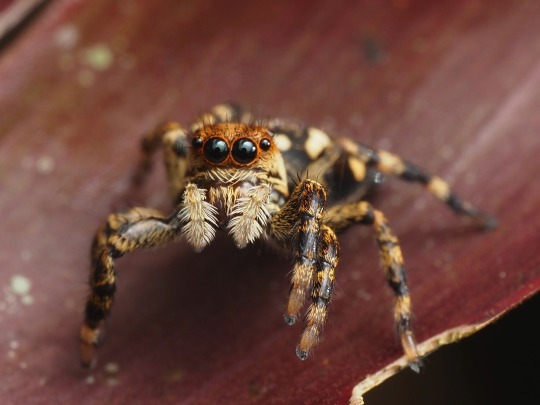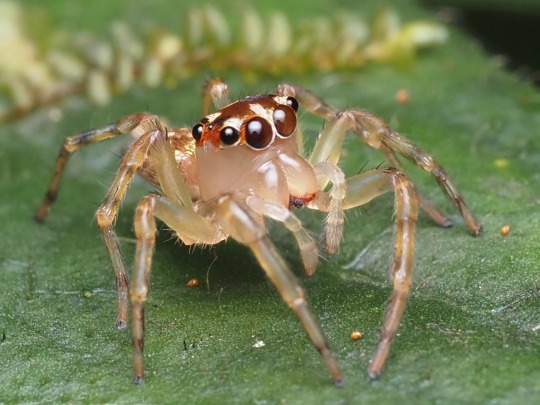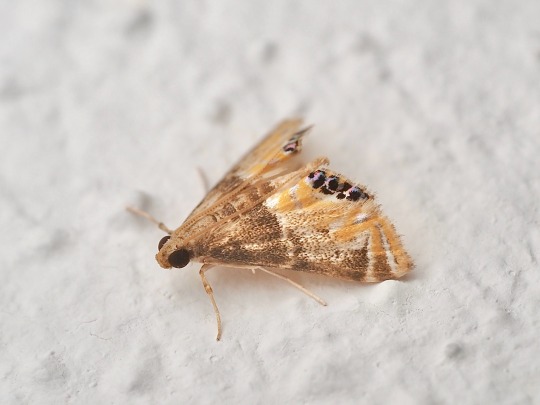#nectopsyche
Photo


White Miller Caddisfly - Nectopsyche sp.
Following up from last week’s post, I’m not finished with the order Trichoptera yet, not when there’s more unusual insects to examine. Compared to the Giant Casemaker from last week, this specimen is much smaller and far more pale. However, just like the Giant Casemaker, this insect could easily be mistaken for a Moth since it’s found flying at night by being drawn to lights. If only it could get to the lights of cottage country that are on the other side of the glass window. We truly don’t know why insects are so attracted to bright light, but there are many theories to consider such as light acting as a guidance mechanism, lights emanate warmth, insects gathered near light may make a convenient food source (and may mistaken UV light itself as other objects), and some insects are drawn to flashing lights due to mate potential. Fireflies - such as genus Photuris - are experts at using light to their advantage, but a small flashing lightbulb is entirely overshadowed by a lamp, but I digress. With this lithe insect exposed in the light, it’s clear to see that with tent-shaped wings and slight differences, this is not a Moth. And by golly, what long antennae it has!! Those extended, filiform antennae look like they’re at least twice the length of the Caddisfly’s body!!
It’s hard to believe that they could be so long in adulthood, but even the Caddisfly larvae in this family have long antennae. The family in question is Leptoceridae - Long-Horned Caddisflies. You may have seen another specie with long antenna on the blog earlier...one with longer wings and larger palps. I speak of the Black Dancer Caddisfly, where the antennae (however long) look more proportional to the insect’s size. As for this Nectopsyche Caddisfly, why would it have such long antennae? The extreme length isn’t exactly practical, but if the antennae are able to grow to such a length, there must be a reason for it. They would probably help gather information from a longer distance, and give the Caddisfly a second more to fly away if necessary. The antennae not exactly feelers, but if they’re sensitive and flexible enough, the amount of information they could map out would be substantial. They may also help in finding mates, especially if they fly at night and visibility is poor. Having antennae touch sounds like an amusing way to meet someone, and maybe that’s what it’s all about. On that note, since antennae segments are likely to be lost in interactions with predators, maybe having longer antennae is seen as a marker of a more beneficial mate? With a structure so long and delicate, it would be tough to take care of. I’m still wrapping my brain around how they fly forwards and land without tripping on their antennae.
Pictures were taken on June 25, 2022 in Muskoka with a Google Pixel 4.
#jonny’s insect catalogue#ontario insect#caddisfly#white miller caddisfly#nectopsyche caddisfly#nectopsyche#nectopsyche specie#trichoptera#insect#muskoka#june2022#2022#entomology#nature#invertebrates#arthropods
5 notes
·
View notes
Text
I was so happy to see one of my favorite examples of visual mimicry in Costa Rica! take a look at this Petrophila moth and a Nectopsyche caddisfly. notice anything familiar about the pattern they seem to share?


it’s the front view of a jumping spider! black round eyes in rows, and stripes for legs with gaps between them. the resemblance, especially seeing the mimics at actual size in person, is striking. both moth and caddisfly have a reflective white patch of scales around the eyes, making them seem reflective and alert.


jumpers are active visual predators, a threat to small insects but also to one another, and have good facial recognition skills for members of their taxonomic family who might be rivals or predators. it’s thought that a jumping spider, viewing a mimic, might be scared off or even consider it a rival and start a territorial display, giving the mimic time to flee.



many Petrophila and their relatives in the subfamily Acentropinae have the jumping spider patterns, and I saw a few species with varying degrees of spideriness. there’s a surprising amount of other arthropods that mimic jumpers, too, from planthoppers to cockroaches and even other jumping spiders with false eyes.
1K notes
·
View notes